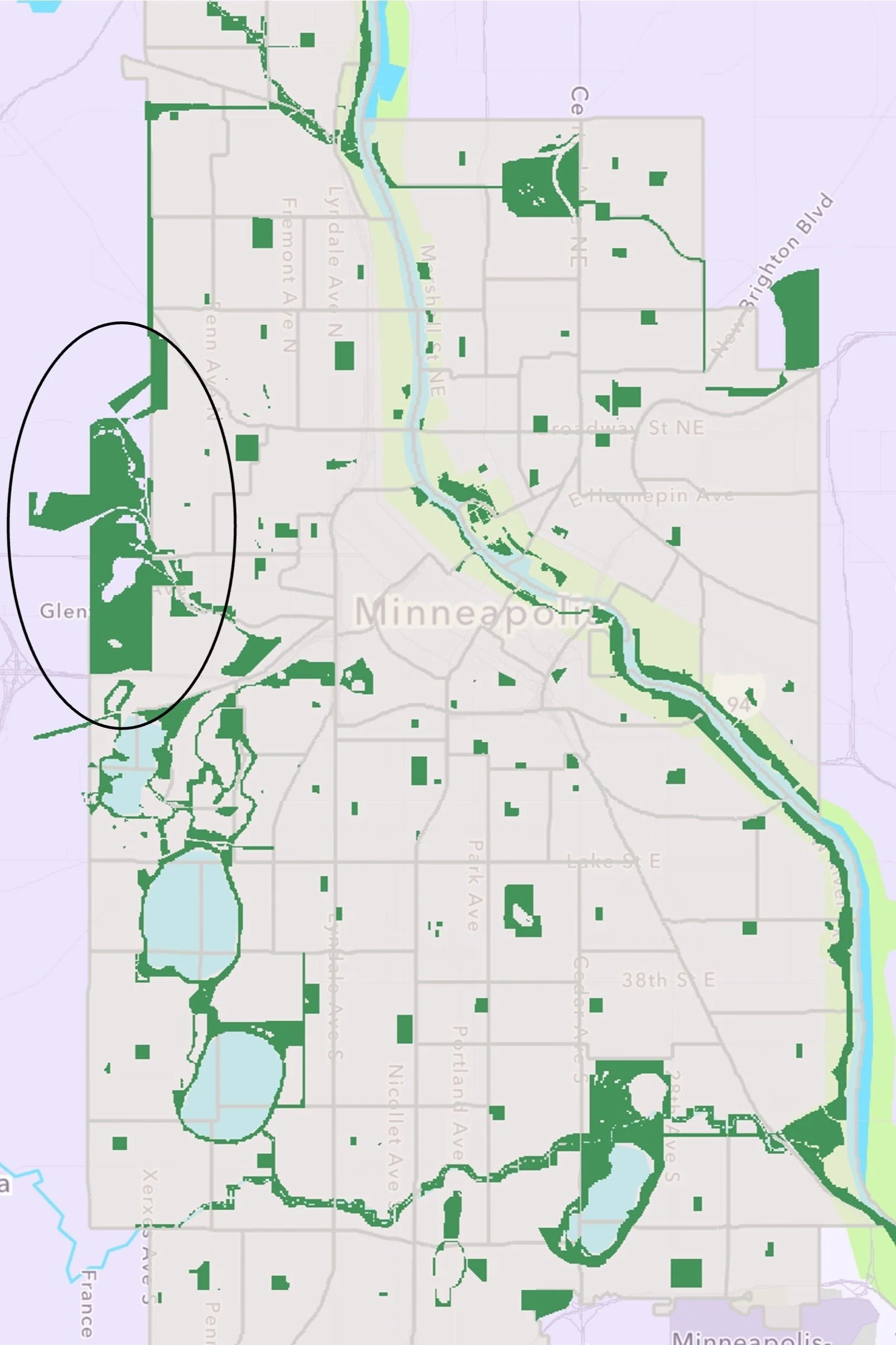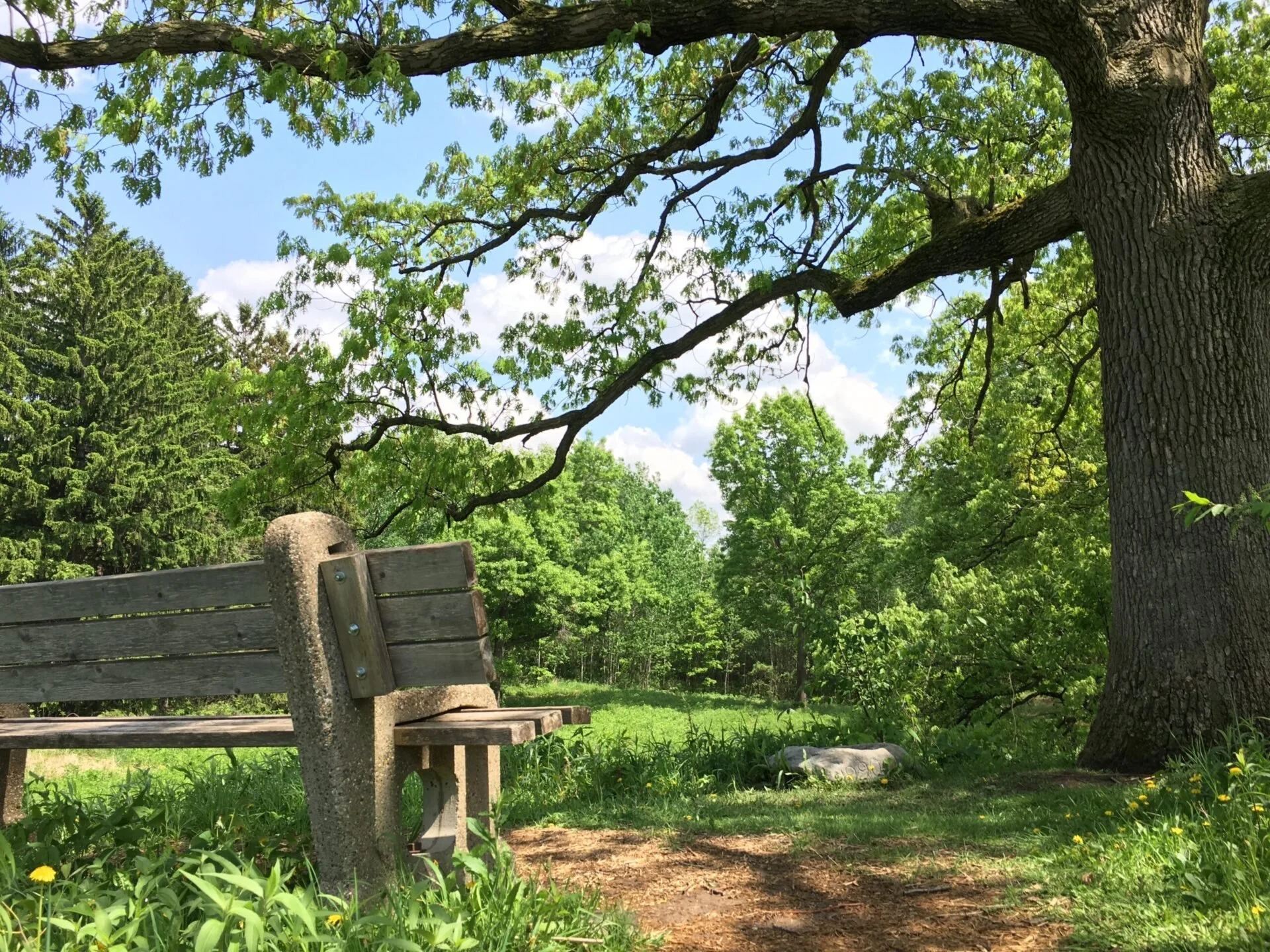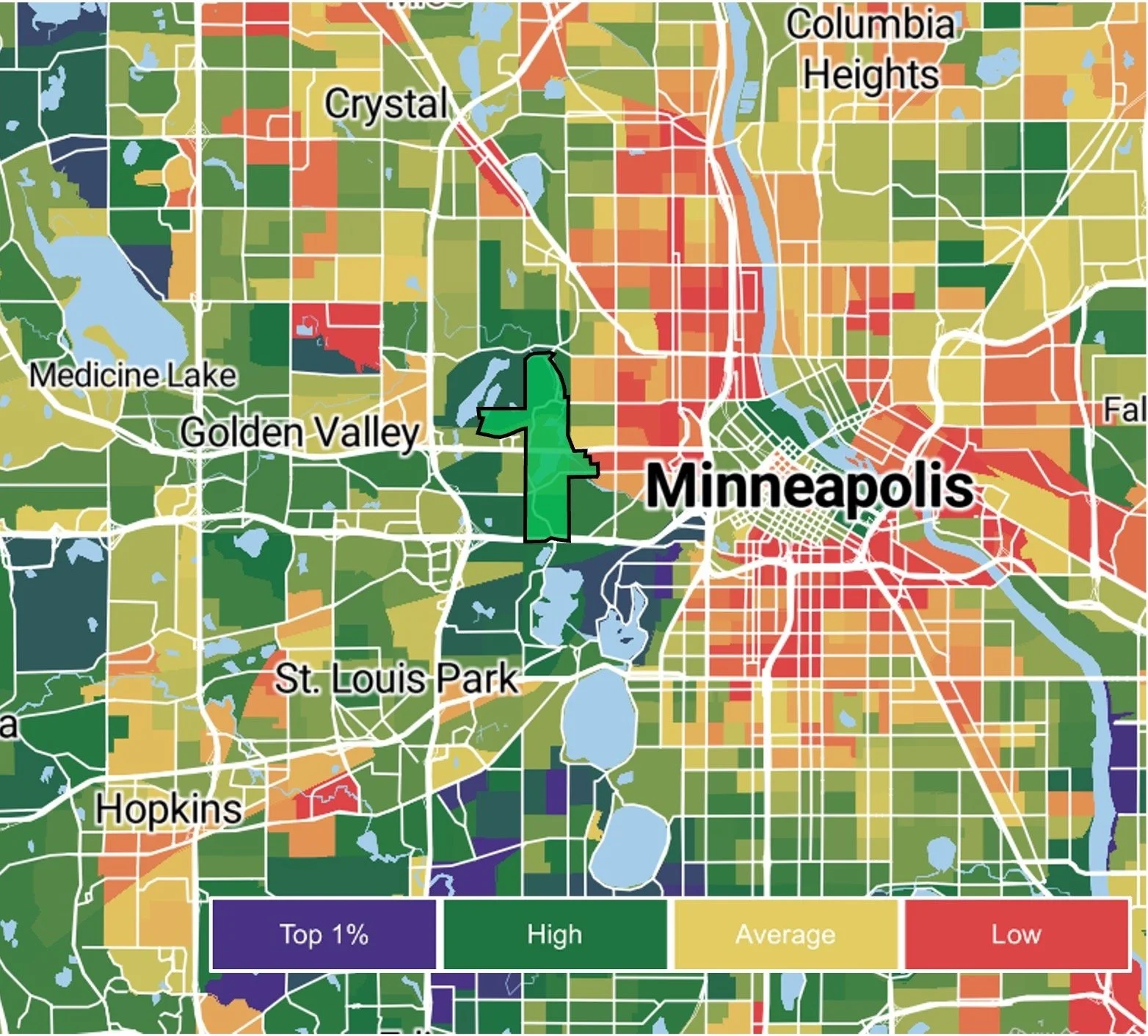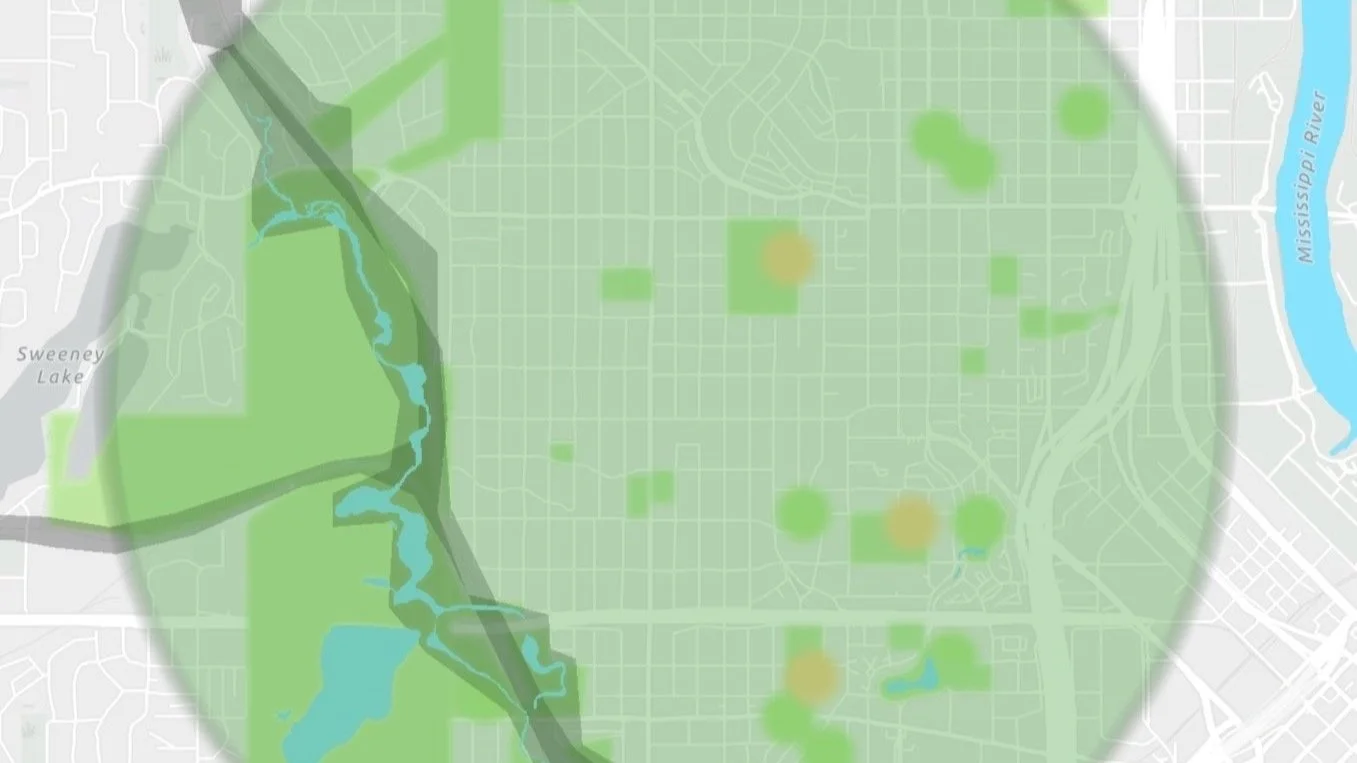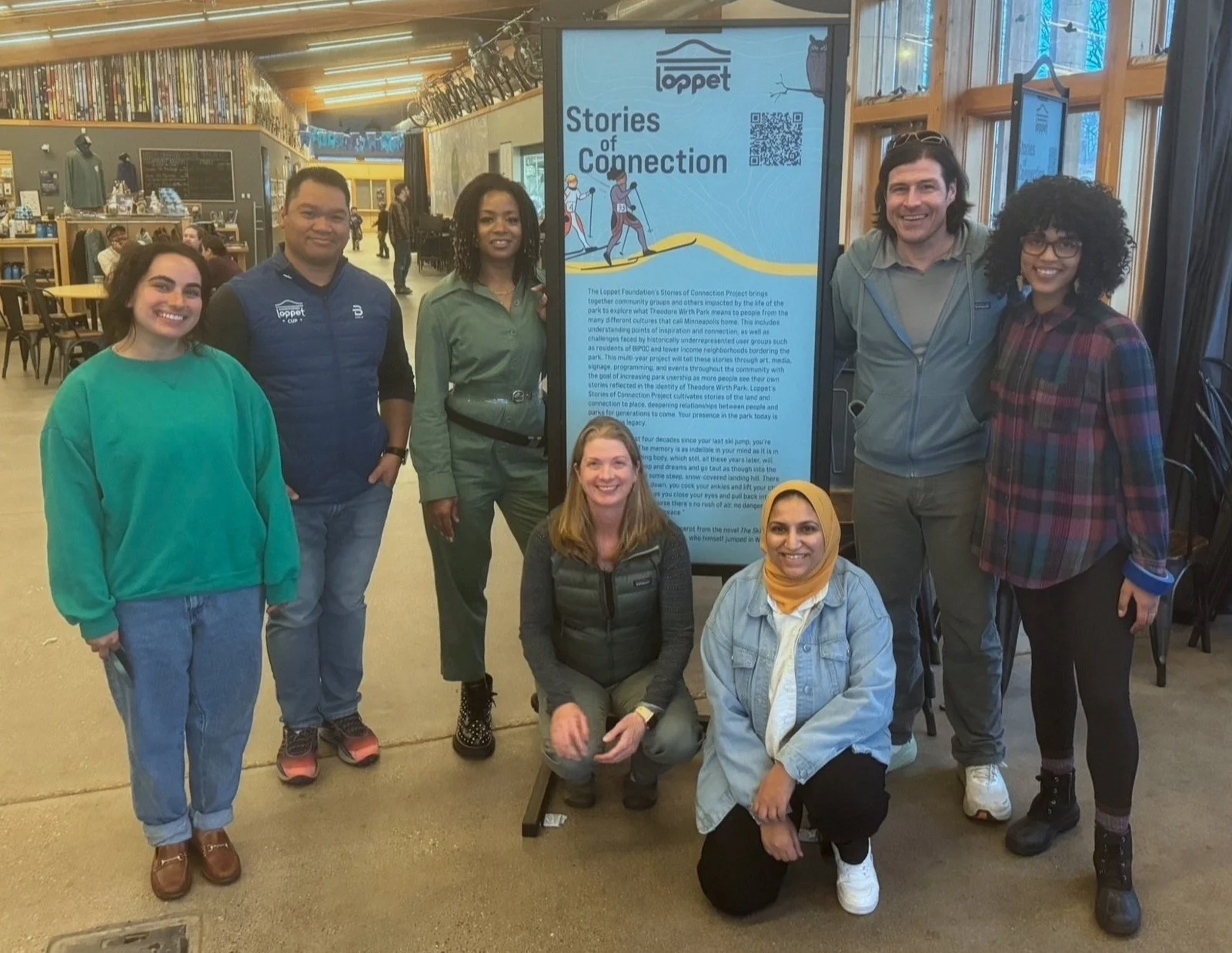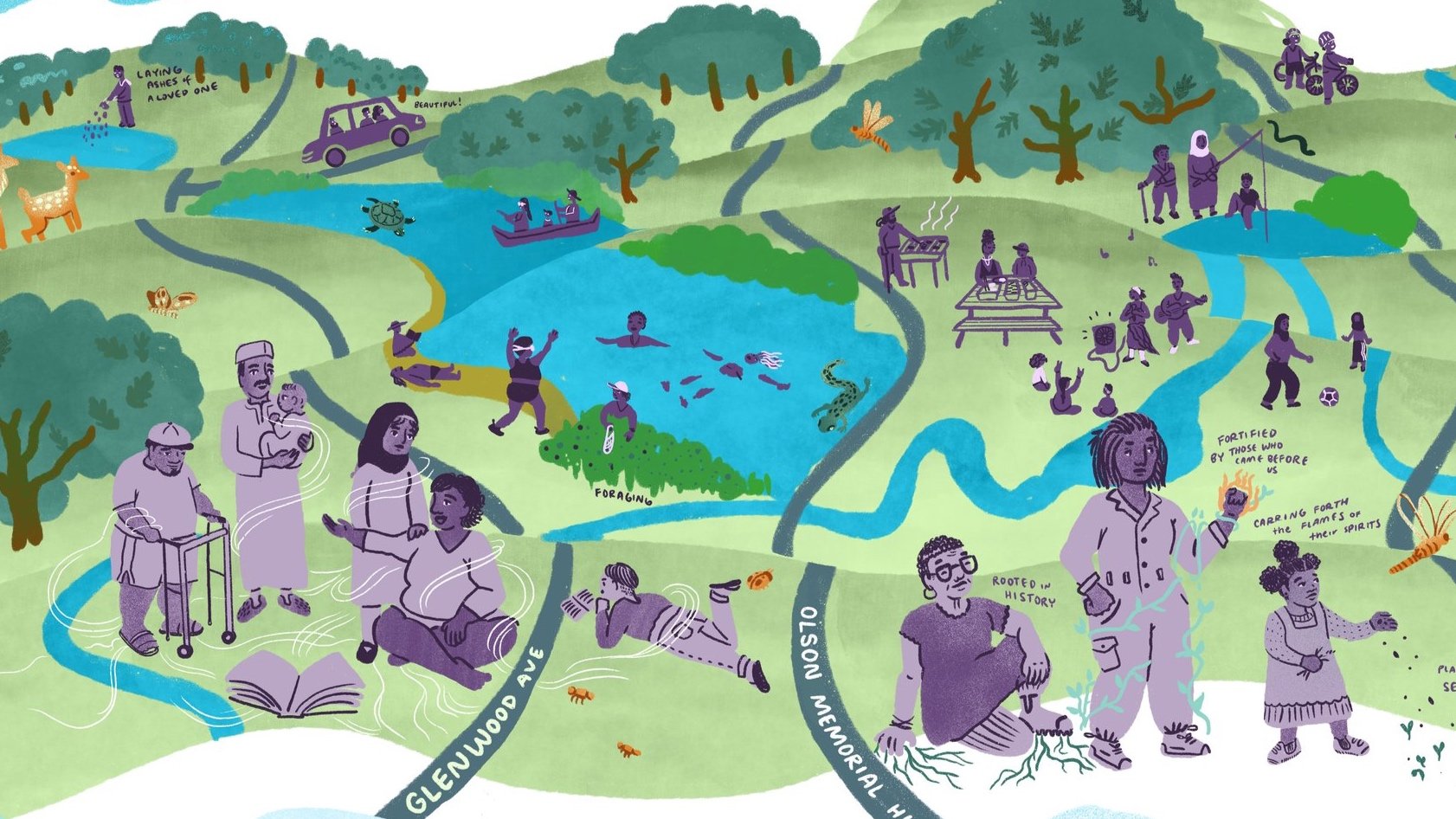
PROJECT UPDATE
Nature in North Minneapolis
Cultivating stories to bridge barriers between people and urban green space.
Illustration: Cory Lin @ Onibaba Studio
Theodore Wirth Park is among the largest city parks in the U.S., rivaling New York’s Central Park in size. The park was envisioned as a cornerstone of a city united by green space. But despite Minneapolis Park and Recreation Board (MPRB) Superintendent Theodore Wirth’s (1863-1949) vision of “parks for the people,” access to green space has been easier for some Minneapolis residents than others.
SANCTUARIES IN THE CITY. Within the city of Minneapolis, Theodore Wirth Park contains patches of habitat representing many ecosystems found throughout Minnesota including oak savanna, woodland, prairie, lake, stream, and bog.
Challenge
Theodore Wirth Park bridges one of the most pronounced cultural and economic dividing lines in the US, spanning highly diverse North Minneapolis to its north and east and more affluent and white neighborhoods to its south and west. This line did not arise by chance, but by a history of intentionally racist policies (Watch PBS Jim Crow of the North, Ep. 1 to learn more). In the first half of the 20th century, racial and ethnic covenants restricted black, Jewish, and other minority Minnesotans from buying houses in neighborhoods adjacent to the park, while redlining made it difficult for residents of color to secure home loans (Learn more at UMN’s Mapping Prejudice project). These discriminatory housing practices segregated the city and left lasting impacts – today, Minneapolis has one of the highest educational achievement gaps between white and minority students, and one of the lowest incidences of per capita black home ownership in the nation.
A PARK BETWEEN TWO WORLDS. Household income and race/ethnicity surrounding Theodore Wirth Park. Data: US Census. Map: bestneighborhood.org.
NatureWerks’ partner The Loppet Foundation is a key steward of the area of Theodore Wirth Park adjacent to Minneapolis’s diverse northside neighborhoods. Over the last two decades, Loppet has worked to grow participation in outdoor sports such as cross-country skiing, mountain biking, and trail running. In 2017, they built a new 14,000 sq. ft. community center called the Trailhead in partnership with MPRB. Loppet has worked to provide opportunities and resources for youth and families from the community to engage in its focal outdoor activities. However, Loppet and NatureWerks recognized that more could be done to connect with neighbors who are underrepresented in park usership and better understand what matters to them about the park, urban nature, and green space.
Focal Product: StoryMap
For Northside residents, nature is a social phenomenon. Much of the importance of Theodore Wirth Park lies in everyday opportunities to find inspiration through connection with nature and community throughout the park’s less curated and more wild areas. Although the racial divides that separate the park from North Minneapolis are very real, the deep and sustaining relationship the northside community has with urban nature also eclipses these boundaries. Many voice hope for a future where people across the city celebrate and cultivate the ways that urban nature inspires the Northside legacy of art, music, culture, commerce, and civic engagement.
IMAGINING THROUGH ILLUSTRATION. To bring resident’s stories to life, project partners contracted Onibaba Studios to develop maps that bring community-park connections, questions, & ideas for the future to life.
PASS IT ON. One theme that emerged early in interviews is the key role of elders who provided youth opportunities for nature connection. Photo: TP Photo Studio.
The community is really excited about the Stories of Connection Project. NatureWerks teamed with us on everything from project design, to fundraising, to community engagement. I also appreciate their focus on mindfulness and nature connection — it’s so important for families and youth to find opportunities for peace and healing outdoors.
Adventures Director, The Loppet Foundation
DeAnna Smith
Strategy
NatureWerks partnered with Loppet to explore how to help bridge divides between people and Theodore Wirth Park. The Stories of Connection Project grew out of initial scoping conversations with northside partners to explore what Theodore Wirth Park means to people from the many different cultures that call Minneapolis home. This included understanding points of inspiration and connection, as well as challenges faced by residents of BIPOC and lower income neighborhoods bordering the park. This multi-year project will tell these stories through art, media, signage, programming, and events throughout the community with the goal of increasing park usership as more people see their stories reflected in the identity of Theodore Wirth Park.
Outcomes
Phase 1: Cultivating Stories (2023 - 2025)
Partnered with University of Minnesota’s Center for Urban and Regional Affairs (CURA) through a 2-year partnership in community-based research via the Kris Nelson Fellows Program.
Gathered stories from over 100 North Minneapolis residents through scoping with partners, 18 depth interviews, and a story cultivation workshop.
Created a StoryMap with artist illustrations to share the common themes and illustrative details of Northside nature connection and inform Phase 2.
Collaborated with Loppet and Northside partners to imagine how stories can transform Loppet’s presence in Wirth Park through increased focus on environmental education and justice, art and media, mindfulness and healing, habitat restoration, a nature trail, and gathering spots for contemplation and community.
Phase 2 (2024 - 2026)
Facilitated Loppet’s award of a two-year $679,000 LCCMR grant to achieve the following objectives, the largest grant in the organization’s history.
Contract local artisans to tell stories through art, media, signage, exhibits, and events throughout the community.
Develop four-season story-based nature connection and environmental justice programs and events for youth and families.
Grow an environmental pathways program to mentor next generation of young adult leaders.
Led project launch, recruited and hired new employees from the North Minneapolis community, and transitioned the project to Northside and BIPOC leadership.
LISTEN. CONNECT. REFRAME. CHANGE. NatureWerks’ approach guided the project and was brought to life at a storytelling workshop in partnership with Black Storytellers’ Alliance and Melanin in Motion. Photo: TP Photo Studios.
RING OF CONNECTION. The mental maps of the people we talked to revealed corridors of green space connecting the city and the park.
SPACE FOR UNSTRUCTURED PLAY. Another emerging theme — creativity, confidence, and teamwork come from self-directed and mentored time spent in nature. Video: DeAnna Smith
THE POWER OF PARTNERS. To resource the Stories Project, NatureWerks helped to facilitate the development of a team of more than a dozen partner organizations.
Beyond research, NatureWerks demonstrates what it means to build relationships rooted in trust, reciprocity, and a deep respect for community voices. Their approach recognizes the environment not just as a backdrop, but as an active participant in the stories we tell and the communities we engage with. Working with NatureWerks has profoundly shaped my understanding of what it means to conduct research that is not only rigorous but also meaningful and transformative. In the end, this project was as much about people as it was about nature — reminding us that the two are inseparable.
Kris Nelson Research Fellow, University of Minnesota, Center for Urban & Regional Affairs (CURA)
Neamatallah Elsayed

